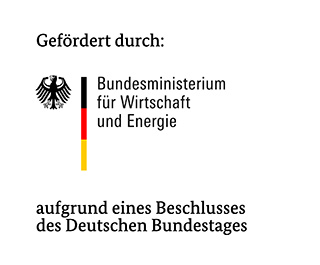Measurement, information and communication technology to digitalize the asset management of electrical distribution networks


Maintenance and renewal planning of equipment is usually based on empirical values, expert knowledge or statistics. The required data results from regular (e.g. every 4 years) on-site inspections of the equipment by maintenance personnel of the network operators. However, these approaches are already reaching their limits today due to a mostly inadequate database.
Measuring and diagnostic systems for monitoring the condition of the equipment could close this gap. Embedded in already existing asset management strategies, data analyses on online and permanently recorded status data of the entire equipment park would open up completely new business processes, methods and strategies for network operators. However, the starting point for the implementation of such approaches are technological solutions from many disciplines tailored to the application of the distribution network. The disciplines, such as measurement and diagnostic technology, low-cost sensor technology and data processing, ICT, data management or algorithms and condition evaluation, must be low-cost. Only in this way can comprehensive systems and the resulting technical and economic benefits be realized and used for predictive maintenance and renewal of energy equipment.
Measurement and diagnostic procedures that enable permanent online monitoring of central equipment of a power grid exists for equipment of the high and extra-high voltage level (>= 110 kV) only. The more compact and cost-effective medium and low-voltage (< 30 kV) equipment used in the distribution network is usually not monitored at all or only rudimentarily. A simple adaptation of standard measurement methods is not possible because of the high costs for the measurement systems. Measuring systems of the high and extra-high voltage level often cost as much as the equipment in the medium and low voltage level itself. However, sensor systems from other industrial sectors show positive economies of scale due to very high unit numbers. For example, in the automotive, consumer and process industries low-cost micro-electromechanical systems (MEMS) are used which, in addition to the sensors, also contain integrated signal processing and communication interfaces.
The project partners Fraunhofer FIT, Maschinenfabrik Reinhausen GmbH, Robert Bosch GmbH and RWTH Aachen University develop, apply and verify cost-effective sensor, measurement, information and communication technologies based on MEMS technology.
In cooperation with a manufacturer (Fritz Driescher KG) and three distribution network operators from the regions of Aachen (RegioNetz), Cologne (Rheinische NETZGesellschaft) and Nuremberg (Main-Donau Netzgesellschaft), the first step is to define basic requirements for the necessary measurement and communication technology with regard to maintenance and renewal of the distribution network. Factors such as key parameters, sensor technology, measurement accuracy, reproducibility, availability, safety, installation effort and marginal costs are considered.
Based on this, new measurement methods will be developed bottom-up by using laboratory tests. In particular, it will be investigated how and whether cost-effective sensors from non-power-engineering areas can be used.
The departments "Digital Energy" and "Cooperation Systems" of Fraunhofer FIT are working on this project. The focus is the implementation of a cost-effective ICT infrastructure and the development of data processing and analysis methods. The ICT infrastructure, consisting of a communication link and an IT platform, enables the future digitalization of asset management in the distribution network by centrally storing the data recorded by the sensor system. A particular challenge is the communication connection in rural areas, for which efficient solutions will be identified. The IT platform enables the application of superimposed analysis methods and efficient data storage. For the entire ICT infrastructure, a special focus payed to cost-effective and practicable solutions in order to achieve great penetration in the distribution network level. In addition to data acquisition, transmission and storage, the data will be pre-processed and algorithms for data preparation and analysis will be developed. The algorithms evaluate the condition of operating equipment or the equipment park and transfer the result of the condition evaluation into an asset management system of the end user. In the process, various data analysis methods, correlation-based but also self-learning methods, are to be realized and analyzed with regard to their applicability to data collected using low-cost technology. In order to integrate the results of the data analysis methods into the asset management of the end user, interfaces and visualization possibilities are developed.

MAKSIM is funded by the Federal Ministry of Economics and Energy (BMWi).